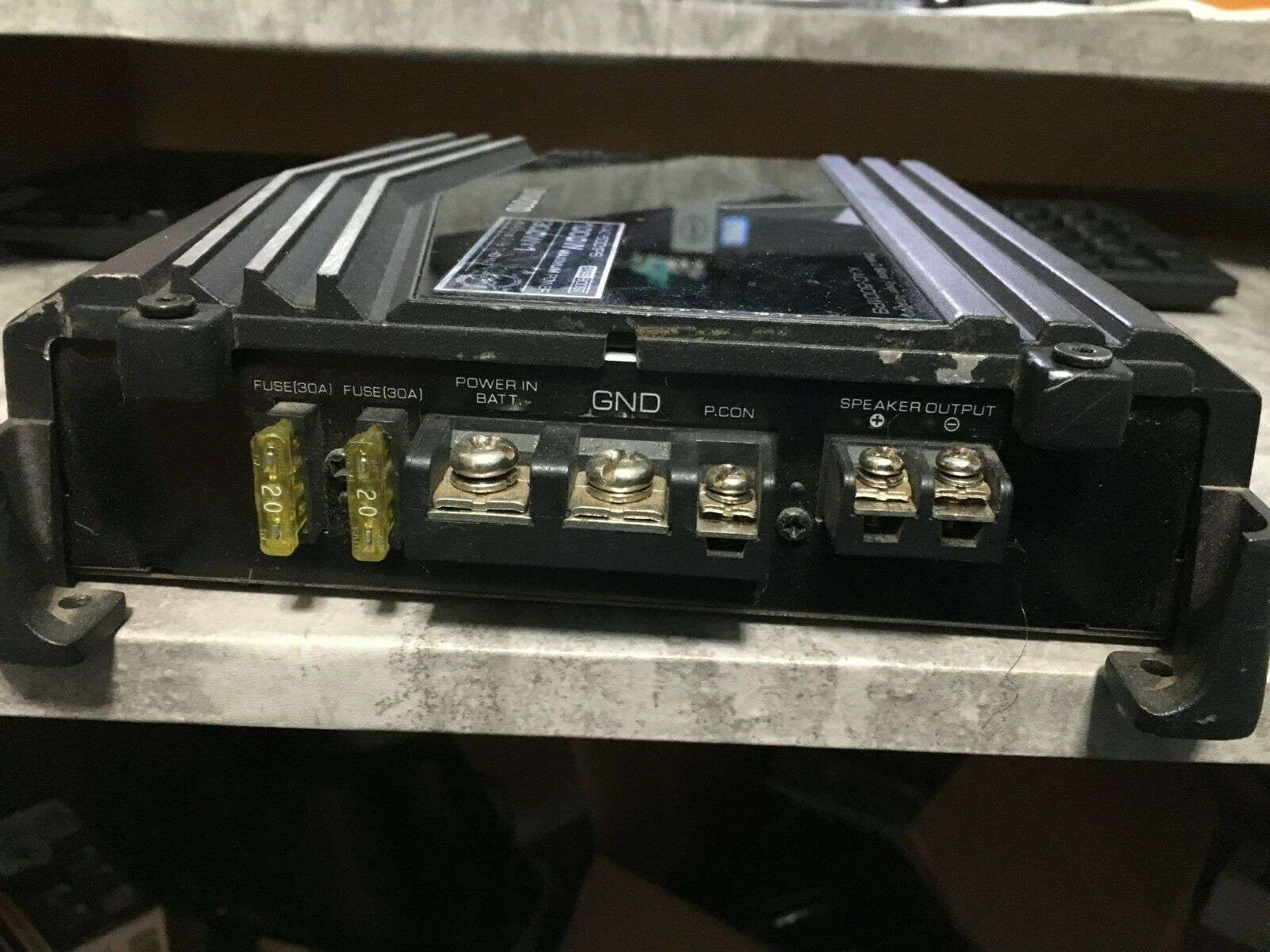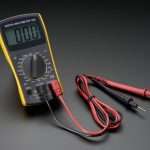
Amazon affiliate here: If you click any Amazon links on my pages and purchase any products I get a small commission from within the original price. Thank you!
Before we start
Id like to explain a little bit about amplifiers. Its important that you know how to find the problem based on the type of issue your amplifier has.
I wrote this article to teach you how to properly test amplifiers. This information is for vehicles of all types, boat amplifiers, motorcycle amplifiers and car amplifiers. In fact, some of the info works for home audio amplifiers also.
Your amplifier has 3 major parts to focus on. Power, Input and output.
Power
The power side consists of the 12v power wire that comes from the battery.
The ground wire that is connected to the chasis ground.
The remote turn on wire that turns the amplifier on depending upon if the remote wire has 12v on it or not.
If your amplifer has proper 12v and ground but will not turn on the remote wire and fuses should be inspected.
Input
Your input signal generally comes from low voltage RCA wires.
This is because your amplifier only needs a small amount of sound signal so that it has head room to clean it up, process it and expand it with as little distortion as possible. This happens right before the Output where the sound leaves the amplifier and runs to your speaker(s).
There are amplifiers that have a high level input option as well. These amps generally do not offer the best sound. They often introduce a higher amount of distortion into your system.
One way to test an amplifier to see if its input is working is to use one of these headphone jack to RCA inputs. Plug your phone into the headphone jack and play music while your amp is turned on. If you don’t hear audio your amp might have an internal problem.


Getting Started
The first step in testing the amplifier is to locate the amp. Your amp can be situated anywhere – under the dashboard, in the boot or behind one of the seats.
You can find the precise location of the amp from the manual. When you have found it, you can check the wiring diagram to see which wires you should test and their characteristics.
If you find that your amplifier has more than one plug, you will have to check the wiring diagram again to identify the main plug. General, it is marked as 12V+. It can either be hot only when the car is running or at all times. Turn on the ignition to figure this out.
If it is not hot (No 12 volts) and the system does not yet work, you will have to trace all the wires and find a problematic plug or breakage. Such a diagnosis can be highly time-consuming and tiring.
Helpful Resources
Need Help Installing any Audio Equipment?
How To Install A Car Amplifier
Looking For a New Audio System Build?
Answers To Some Common Questions
How to Choose the Right Power and Ground Wire
Matching Subwoofers and Amplifiers
Get More Bass Out Of My Subwoofer
Why Does My Stereo Cut Out at High Volume?
Troubleshooting Tips
If you think everything is connected properly but the amplifier does not work, here are some tips and advice you can use to track the problem.
1. Is the amp mounted to a non-conductive surface?
If the amplifier case is touching the car’s metal directly or through the screws, a problem is likely to occur. This puts the amp in protection mode and it may not turn on at all sometimes. You should make sure it is not touching any conductive surface in the vehicle.
2. Does the amplifier get the right power and ground? (12v from battery and Ground from Chassis)
An amplifier requires a positive power input and negative power output. It is necessary that the power gets in and out of the amp for its proper functioning.
You will get no output if wiring is incorrect or it is to small for the amp or the connection is loose or if the fuse is blown. You can check the fuse of the amp to ensure it is not blown and in good condition.
How to test a fuse with a multimeter
Instead of relying on your eyes, test it with a multimeter after removing. It should show zero ohms. Also, use the voltmeter to check the voltage between the amp terminals.
You should see about 12 volts when the engine is off and above 14 volts when the engine is running. If you find that the amp does not receive power, check the connections for the ground and power wire as they could be loose.
Quick tip: Use your car’s battery as a reference for how much power your amplifier should be getting when you test it. For example, if I see 12v at the battery I should see 12v at the amplifier.


3. Does the amplifier receive an input signal? (Sound coming from stereo)
Music input is either provided through high-level speaker input or low-level RCA jacks. Most head units have at least one pair of RCA outputs. Check these connections to see the amp’s gain.
Turn on the head unit and adjust the volume to half the gain control and see if you hear any sound. If yes, keep adjusting the gain of the amplifier. If not, see if the amplifier has a problem or it is with the signal.
4. Does the amplifier output a signal? (sound coming from speakers)
To check this, you should test the amp’s output by disconnecting the speaker wiring. Using a good test speaker, you can connect it to one channel at a time. If the speakers work, you can identify that there is something wrong with the speaker wiring, functioning or a bad connection.
Be sure to Rule out your speakers being the problem if your amplifier is connected to them in any way by using our speaker testing guide.
If you see that the amplifier turns on but the test speaker shows no output, the problem should be the amp itself since you have checked the input signal and power.
Testing the car amplifier using a multimeter is comparatively simple if you have a basic knowledge of the working. We hope this post about the testing process and troubleshooting tips help you make the most out of your car’s music system.
Testing A Car Amplifier – Preparation and Expectations
Car stereos are today more complicated than ever before. You might remember the single speakers mounted on dashboards in the good old days.
It just took seconds to test them. Today, if you encounter a problem with your eight-speaker music system, you will need some patience. While the process is somewhat cumbersome, you can do it yourself to save money.
See if the main unit is working and lighting up. If yes, there should be a problem with the external amps. Also, mind that not all cars work on amps. It depends on the manufacturing year and model of the car you have. You can check this by going through the manual.
If the problem is not with the amps, you will have to test the amplifier to see if gets power. If not, it will not let the sound go through the speakers and that is the problem.


Configuring the Multimeter
The process of configuration of the multimeter is not at all complicated, even for those who are new at it. Just remember that the black probe goes into the common socket while the red goes into the socket labeled as A, standing for amperage.
There are two sockets, one of them is high amperage and the other is more sensitive. If you are not sure about which you should try, go for the one with the highest rating.
To configure the multimeter, turn the central dial to the amperage setting suitable to the socket. There is A and mA setting on both the multimeter and amplifier but if you find just one A setting on the dial, you can check the manual.


